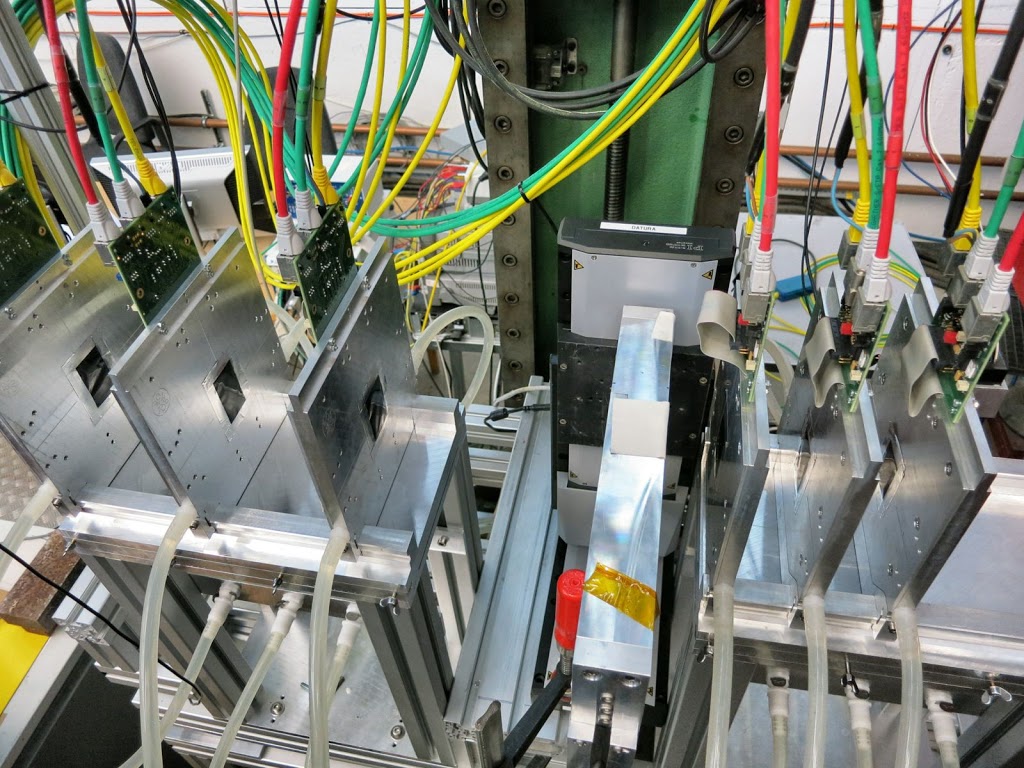SPS shutdown sends test beam research to DESY
Last week, four members of the CERN LCD group traveled to DESY, Hamburg, to test data acquisition methods for a Timepix pixel detector.
It's unusual for CERN groups to have to travel to perform a test beam, but with the PS and SPS out of action for upgrade during Long Shutdown 1, the beams at DESY constitute the closest high-energy facility to Geneva.
The short plane ride to Hamburg gives access to the DESY II synchrotron, which delivers continuous electron beams of selectable momentum within the range of 1-5 GeV. Testers can also take advantage of one of the EUDET telescopes installed in several of the beam lines. These high-precision devices each consist of six silicon pixel detector planes, and allow researchers to measure tracks with micrometer-level resolution.
In the second of three planned trips to DESY this year, the LCD team used a Timepix detector to test the integration of a new piece of data acquisition hardware, designed to increase the rate at which tracks can be recorded. This paves the way for a two week visit at the end of the summer, where ultra-thin silicon sensors will be tested and characterised as part of the R&D effort for a future linear collider detector.

Fig.1: The Timepix module under test located between the six modules of the EUDET telescope.
The team was joined by students from Aarhus University in Denmark, who helped with the data taking and analysis. In return the members of the LCD group assisted them in installing and commissioning their own piece of equipment: a spectrometer magnet placed inside the EUDET telescope, which allowed for a precise measurement of the momentum of the traversing electrons. This research will continue at the CERN SPS, once it is back in operation after Long Shutdown 1. There, the interactions of high-energy electrons in crystals will be measured, which will provide experimental input on strong-field QED effects. These same fields lead to the strong beam-beam effects between bunches of electrons and positrons at the interaction point of high-energy linear colliders.
